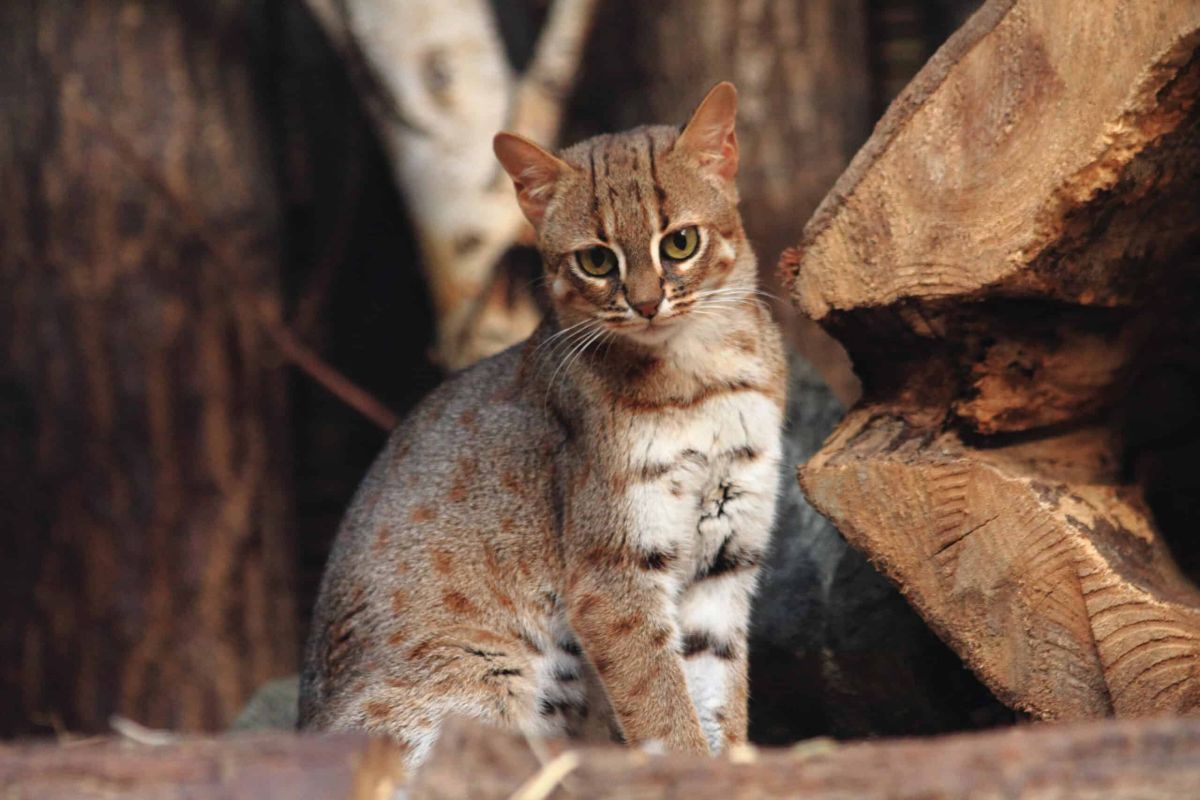The Rusty-Spotted Cat: Feline of the Indian Subcontinent

The Rusty-Spotted Cat (Prionailurus rubiginosus) is a small wild cat species endemic to the Indian subcontinent, primarily found in India and Sri Lanka. Renowned for its striking appearance and diminutive size, the Rusty-Spotted Cat is one of the smallest cat species in the world, often enchanting wildlife enthusiasts, researchers, and cat lovers alike.
Physical Characteristics
The Rusty-Spotted Cat measures approximately 48-65 cm in length, with a tail that accounts for nearly half of its body length. Weighing between 1.5-3.5 kg, these cats are slightly larger than domestic house cats but possess an elegant build and a distinctive coat. The fur is short and dense, featuring a rusty hue with rich black spots and stripes that provide effective camouflage in their natural habitat. Their striking yellow eyes are framed by prominent whiskers, contributing to their captivating appearance.
Habitat and Distribution
Rusty-Spotted Cats are primarily found in grasslands, scrub forests, and deciduous woodlands, thriving in areas with dense undergrowth where they can seek cover. Their distribution spans across the Indian states of Maharashtra, Madhya Pradesh, Karnataka, and parts of Gujarat, as well as in Sri Lanka. The degradation of their habitat due to agriculture, urbanization, and deforestation poses a significant threat to their populations.
Behavior and Diet
These solitary and nocturnal creatures are mainly active during dusk and dawn; a lifestyle known as crepuscular behavior. Their keen hunting instincts allow them to be effective predators, primarily feeding on small mammals, birds, reptiles, and insects. Utilizing their agility and stealth, they navigate through their environment with remarkable grace, employing a combination of ambush tactics to catch their prey.
Rusty-Spotted Cats are known to be highly adaptable, as they can thrive in a range of habitats. They often create small dens or use existing hollow trees, rock crevices, or abandoned burrows for shelter. Their social behavior is relatively limited, with short interactions occurring during the mating season, when males and females come together to mate.
Conservation Status
The Rusty-Spotted Cat has been categorized as Near Threatened by the IUCN Red List, primarily due to habitat loss and fragmentation. Their stealth and elusive nature make them difficult to survey, which complicates conservation efforts. Although they exist in protected areas such as national parks and wildlife sanctuaries, ongoing threats such as poaching, human-wildlife conflict, and diminishing prey availability pose significant challenges to their survival.
Conservation measures are crucial for ensuring the future of this enchanting species. Efforts include habitat protection, anti-poaching initiatives, and raising awareness about the importance of preserving biodiversity within their ecosystems. Engaging local communities in conservation efforts is also vital, as these residents are essential allies in protecting the Rusty-Spotted Cat’s natural habitats.
Conclusion
The Rusty-Spotted Cat represents a unique and charming aspect of the rich biodiversity found in the Indian subcontinent. Its captivating appearance, combined with its elusive nature, ensures that it remains a subject of intrigue and admiration among wildlife enthusiasts. As we strive to protect their habitat and promote sustainable practices, fostering awareness of the Rusty-Spotted Cat’s ecological significance will be essential for its conservation. The survival of this magnificent little feline depends not only on our understanding and efforts but also on our commitment to preserving the environments that allow it to thrive.



